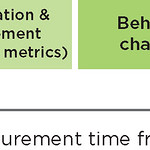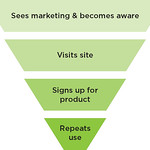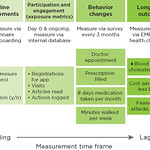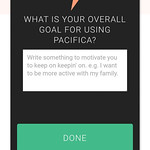Engaged

Designing for Behavior Change
Behavior change design creates entrancing—and effective—products and experiences. Whether you’ve studied psychology or are new to the field, you can incorporate behavior change principles into your designs to help people achieve meaningful goals, learn and grow, and connect with one another. Engaged offers practical tips for design professionals to apply the psychology of engagement to their work.
If these describe you, you may be the audience for this book:
- You love attending conferences like UXPA, CHI, the Habit Summit, or HxRefactored
- Your commute finds you listening to podcasts like Freakonomics Radio, 99% Invisible, HumanTech, or Radiolab
- You have a job title like product manager, designer, or experience strategist (or you do the type of work associated with those titles)
- You’ve worked in design agencies, on in-house strategy or design teams at big companies, or for yourself with clients
- Your shower time is spent thinking about how to make the world a better place by making new products and experiences or fixing the ones already there
- You’re always wondering why people do what they do and how to design for them
Behavior change design creates entrancing—and effective—products and experiences. Whether you’ve studied psychology or are new to the field, you can incorporate behavior change principles into your designs to help people achieve meaningful goals, learn and grow, and connect with one another. Engaged offers practical tips for design professionals to apply the psychology of engagement to their work.
If these describe you, you may be the audience for this book:
- You love attending conferences like UXPA, CHI, the Habit Summit, or HxRefactored
- Your commute finds you listening to podcasts like Freakonomics Radio, 99% Invisible, HumanTech, or Radiolab
- You have a job title like product manager, designer, or experience strategist (or you do the type of work associated with those titles)
- You’ve worked in design agencies, on in-house strategy or design teams at big companies, or for yourself with clients
- Your shower time is spent thinking about how to make the world a better place by making new products and experiences or fixing the ones already there
- You’re always wondering why people do what they do and how to design for them
Testimonials
An incredibly comprehensive and intelligent guidebook for designing products and services that change people’s lives.
Nir Eyal, bestselling author of Hooked and Indistractable
Engaged demystifies the psychology behind behavior change and offers practical methods and examples for applying it to product design. A worthwhile introduction for anyone trying to help users achieve health, financial, or other goals.
Kim Goodwin, author of Designing for the Digital Age
Engaged draws from the latest science on behavior change and compelling examples to teach design professionals to create world-class products that make big impacts on users’ lives. Clearly written and well-researched, Engaged is a great addition to any designer’s toolkit.
Scott Sonenshein, Rice University professor and bestselling author of Stretch and Joy at Work
Amy’s book is shockingly practical, showcases the impact of behaviors on design in practice, and provides clear tips and approaches you can immediately employ to benefit your work.
Alyssa Boehm, user experience executive
Bucher proves in this step-by-step guide that behavior change design is valuable to all areas of design.
Lis Pardi, Experience Design Manager, Toast
Interest in behavioral economics has exploded in recent years as product teams strive to empower people to achieve meaningful goals. For all on that journey —entrepreneurs, intrapreneurs, product managers, designers, researchers, engineers—this is a comprehensive playbook that translates behavioral economic theory into practical, actionable, and ethical design techniques.
Jen Cardello, VP, Head of UX Research & Insights, Fidelity Investments
I have witnessed large audiences of people be mesmerized by Amy Bucher’s presentations on digital health and behavior change design. She makes the topic approachable bringing academic theory to life through relevant examples and actionable insights. This book proves to be an essential guide for digital health innovation, moving beyond shiny objects to define what will truly deliver engagement and improved outcomes.
Amy Heymans, co-founder and Chief Experience Officer of Mad*Pow
A book is only as good as the behavior it changes, and in this practical guide, Bucher focuses on combining rigorous application with an approachable voice. The product of over a decade of experience across a variety of domains, Engaged is a unique contribution that is well worth reading for anyone who wants to create change in the world, particularly in a digital medium.
Matt Wallaert, author of Start at the End: How to Build Products That Create Change
Table of Contents
Chapter 1 – A Kind of Magic: Psychology and Design Belong Together
Chapter 2 – Pictures of Success: Measurement and Monitoring
Chapter 3 – It’s My Life: Making Meaningful Choices
Chapter 4 – Weapons of Choice: Make Decisions Easier
Chapter 5 – Something in the Way: Diagnosing Ability Blockers
Chapter 6 – Fix You: Solving Ability Blockers
Chapter 7 – Harder, Better, Faster, Stronger: Designing for Growth
Chapter 8 – Come Together: Design for Connection
Chapter 9 – Mr. Roboto: Connecting with Technology
Chapter 10 – A Matter of Trust: Design Users Can Believe In
Chapter 11 – Someday Never Comes: Design for the Future Self
Chapter 12 – Nothing’s Gonna Stop Us Now: Go Forth and Engage
FAQ
These common questions and their short answers are taken from Amy Bucher’s book Engaged: Designing for Behavior Change. You can find longer answers to each in your copy of the book, either printed or digital version.
- I’ve got a background in behavior science, but no talent for visual design. Can I do behavior change design?
Absolutely. I was a total amateur at all of the things I thought were design before I started working in the field (and am still not very good at many of them). My strengths are research, strategy, and evaluation, so I partner with people who bring the visual and interaction design and application development chops. I have colleagues who have stronger design skills and less research experience, so they team up accordingly. It’s all about building a team that can complement each other. Chapter 12 offers tips for bringing behavior change into your work, regardless of your background.














